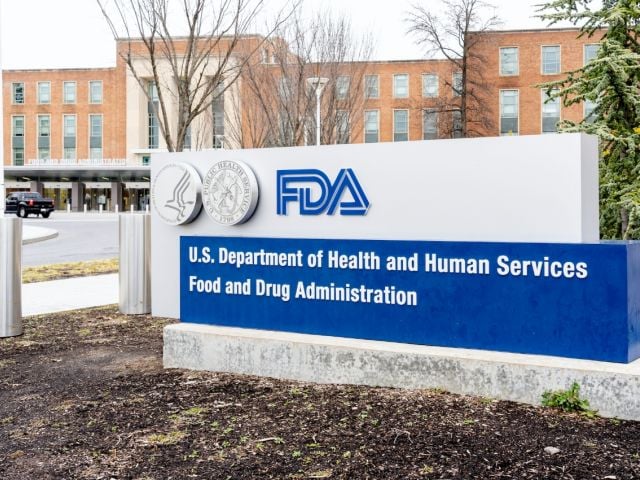Washington, D.C. – While other federal public health and environmental agencies have targeted the plastics ingredient bisphenol A (BPA) as a chemical of concern to human health, the Food and Drug Administration has remained silent. In a letter to FDA Commissioner Margaret Hamburg, Environmental Working Group President Ken Cook asked why. Cook wrote: “Other federal agencies have singled out BPA as a major focus of research and potential regulation. In December, the National Institutes for Environmental Health Sciences launched a $14 million research initiative in hopes of filling in the research gaps about the human health risk of BPA. The Environmental Protection Agency has identified BPA as a possible human health threat and priority for risk assessment. Yet the FDA has remained silent. How much more does the FDA need to know to be convinced it must protect the national food supply from further contamination? We urge you to act now to prohibit the use of BPA in food and food containers.” Cook’s letter to Hamburg came only days after British scientists reported finding that Americans with high concentrations of BPA in their urine were more likely to report having heart disease or diabetes than people with lower BPA measurements. Authoritative studies by U.S. Centers for Disease Control and Prevention (CDC) found that nearly all Americans test positive for traces of BPA. An EWG study released late last year detected BPA in the umbilical cord blood of 9 of 10 infants born in 2007 and 2008. Cook wrote to Hamburg: “We cannot quantify the cost to our society, in terms of medical bills, lost productivity and troubled lives. But we are sure of this: the price, whatever it is, is too high, and it is unnecessary.” The text of Mr. Cook’s letter is below: January 14, 2010 The Honorable Margaret A. Hamburg Commissioner U.S. Food and Drug Administration 10903 New Hampshire Ave. Building 1 Room 2217 Silver Spring, MD 20993-0002 Subject: FDA must act to reduce the human health burden of bisphenol A Dear Madam Commissioner, The Food and Drug Administration (FDA) has yet to issue its final decision on whether bisphenol A (BPA), an industrial chemical and synthetic estrogen, should be used in food packaging. As even the chemical industry has acknowledged, BPA leaches into foods and beverages from polycarbonate plastic containers and epoxy-based metal food can linings. As authoritative studies by U.S. Centers for Disease Control and Prevention (CDC) have demonstrated, nearly all Americans test positive for traces of BPA. Environmental Working Group’s most recent study of cord blood found BPA in 9 of 10 samples taken from children born in 2007 and 2008. Dozens of animal studies suggest that very low doses of BPA disrupt the endocrine system, undermine normal neurological and reproductive development and trigger a variety of chronic and serious disorders such as cancer, diminished brain function and intellectual capacity, asthma, obesity and diabetes. Important new research demonstrates that BPA harms not only laboratory animals but also humans. It is significant and troubling that physical changes are being detected even at the very low levels to which people are routinely exposed because of BPA contamination in food and other products. A British study published January 13 adds to this growing body of science by reporting that Americans with high concentrations of BPA in their urine were more likely to report having heart disease or diabetes than people with lower BPA measurements. Tens of millions of children undergoing crucial windows of development are being exposed daily to this dangerous chemical via plastic baby bottles and sippy cups, canned infant formula and popular foods such as canned soup. Ubiquitous BPA contamination of our food is believed to have a subtle but lasting impact on Americans’ health. We cannot quantify the cost to our society, in terms of medical bills, lost productivity and troubled lives. But we are sure of this: the price, whatever it is, is too high, and it is unnecessary. Other federal agencies have singled out BPA as a major focus of research and potential regulation. In December, the National Institutes for Environmental Health Sciences (NIEHS) launched a $14 million research initiative in hopes of determining the human health risk of BPA. The Environmental Protection Agency (EPA) has identified BPA as a possible human health threat and priority for risk assessment. Yet the FDA has remained silent. How much more does the FDA need to know to be convinced it must protect the national food supply from further contamination? We urge you to act now to prohibit the use of BPA in food and food containers. Thank you for your attention. Sincerely, Kenneth Cook President Copies: The Honorable Lisa Jackson, Administrator, U.S. Environmental Protection Agency Dr. Linda Birnbaum, Director, National Institute of Environmental Health Sciences ATTACHMENT Studies demonstrating BPA toxicity to humans at current levels of exposure Health problems associated with BPA exposures in people include the following:
- Cardiovascular disease - A study published in January 2010 links BPA exposures in Americans to heart disease (Melzer 2010). The work, by a team from the Peninsula Medical School and the University of Exeter, includes 1,493 American adults enrolled in the Centers for Disease Control and Prevention’s (CDC’s) National Health and Nutrition Examination Study (NHANES). The researchers examined the newest NHANES data from 2005-06 and also pooled it with 2003-04 NHANES data. They confirm their previous findings in 2008 that associated BPA exposures and heart disease from participants in the 2003-04 study (Lang 2008).
- Aggression – In a study of 249 children, researchers at the University of North Carolina found an association between prenatal BPA exposure and aggressive behavior in 2-year-olds, especially among girls (Braun 2009).
- Polycystic ovarian syndrome (PCOS) – Scientists at the University of Tokyo studied 47 women with reproductive disorders and 26 healthy women and found that those with polycystic ovarian syndrome (PCOS) had higher serum levels of BPA relative to women with normal ovarian function, and that there were positive correlations between BPA concentrations and sex hormones (testosterone and androgen) (Takeuchi 2004). This confirmed their earlier study of 16 women with PCOS (Takeuchi 2002).
- Recurrent miscarriages – Researchers found higher serum BPA levels among 45 women with a history of recurrent miscarriages than among women with normal pregnancies (Sugiura- Ogasawara 2005).
- Damage to male reproductive system – Two studies of workers with BPA exposures similar to those measured in Americans (Calafat 2008) find associations with damage to the male reproductive system. A study of 42 men with occupational exposure to epoxy resins found that they had decreased secretion of follicle stimulating hormone when compared with men without occupational exposure to epoxy resins (Hanaoka et al. 2002). Another study of 25 Japanese shipyard workers found BPA-exposed painters had lower testosterone concentrations and higher luteinizing hormone (Cha 2008).
- Diabetes – In 2008, scientists from the Peninsula Medical School and the University of Exeter examined BPA levels measured more than 14,000 adults participating in the CDC NHANES study from 2003-04. They found that people with higher BPA levels were more than twice as likely to report a diagnosis of type 2 diabetes than individuals with the lowest 25% of BPA exposure (Lang 2008).
References Braun JM, Yolton K, Dietrich KN, Hornung R, Ye X, Calafat AM, Lanphear BP. 2009. Prenatal Bisphenol A Exposure and Early Childhood Behavior. Environ Health Perspect. 117(12): 1945–1952. (doi: 10.1289/ehp.0900979) Calafat AM, Ye XY, Wong LY, Reidy JA, Needham LL. 2008. Exposure of the US population to bisphenol A and 4-tertiary-octylphenol: 2003-2004. Environ Health Perspect. 116(1): 39-44. Cha BS, Koh SB, Park JH, Eom A, Lee KM, Choi HS. 2008. Influence of occupational exposure to bisphenol A on the sex hormones of male epoxy resin painters. Molec Cell Toxicol. 4(3): 230-234. Hanaoka T, Kawamura N, et al. 2002. Urinary bisphenol A and plasma hormone concentrations in male workers exposed to bisphenol A diglycidyl ether and mixed organic solvents. Occup Environ Med. 59(9): 625-8. Lang IA, Galloway TS, Scarlett A, Henley WE, Depledge M, Wallace R, Melzer D. 2008. Association of Urinary Bisphenol A Concentration With Medical Disorders and Laboratory Abnormalities in Adults. JAMA. 300(11): 1303-1310. (doi:10.1001/jama.300.11.1303). Melzer D, Rice NE, Lewis C, Henley WE, Gallowa TS. 2010. Association of Urinary Bisphenol A Concentration with Heart Disease: Evidence from NHANES 2003/06. PLoS 5(1): e8673. http://www.plosone.org/article/info:doi/10.1371/journal.pone.0008673 Sugiura-Ogasawara M, Ozaki Y, Sonta S, Makino T, Suzumori K. 2005. Exposure to bisphenol A is associated with recurrent miscarriage. Hum Reprod. 20(8): 2325-9. Takeuchi T, Tsutsumi O. 2002. Serum bisphenol a concentrations showed gender differences, possibly linked to androgen levels. Biochem Biophys Res Commun. 291(1): 76-8. Takeuchi T, Tsutsumi O, Ikezuki Y, Takai Y, Taketani Y. 2004. Positive relationship between androgen and the endocrine disruptor, bisphenol A, in normal women and women with ovarian dysfunction. Endocr J 51(2): 165-9. ###



